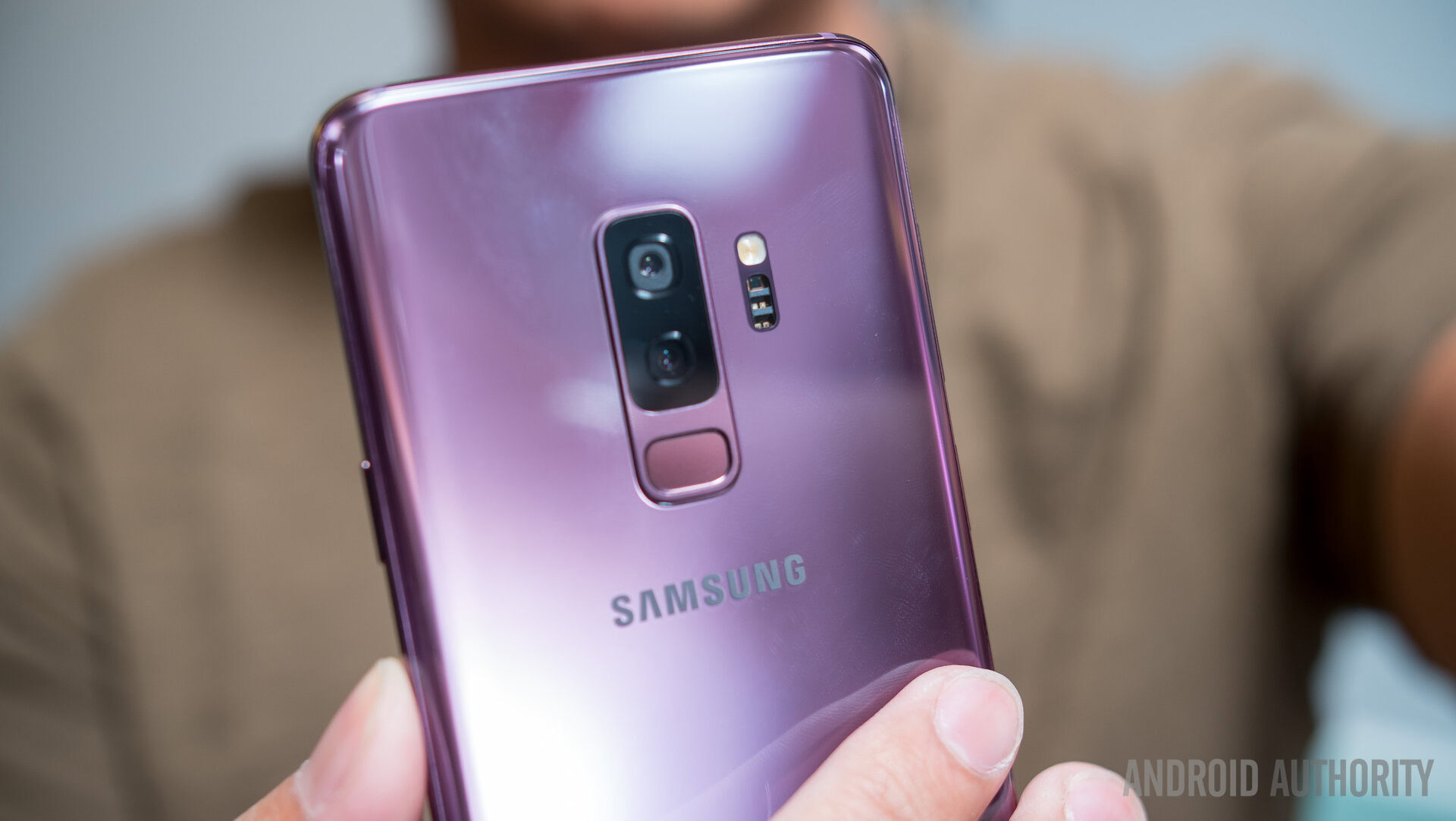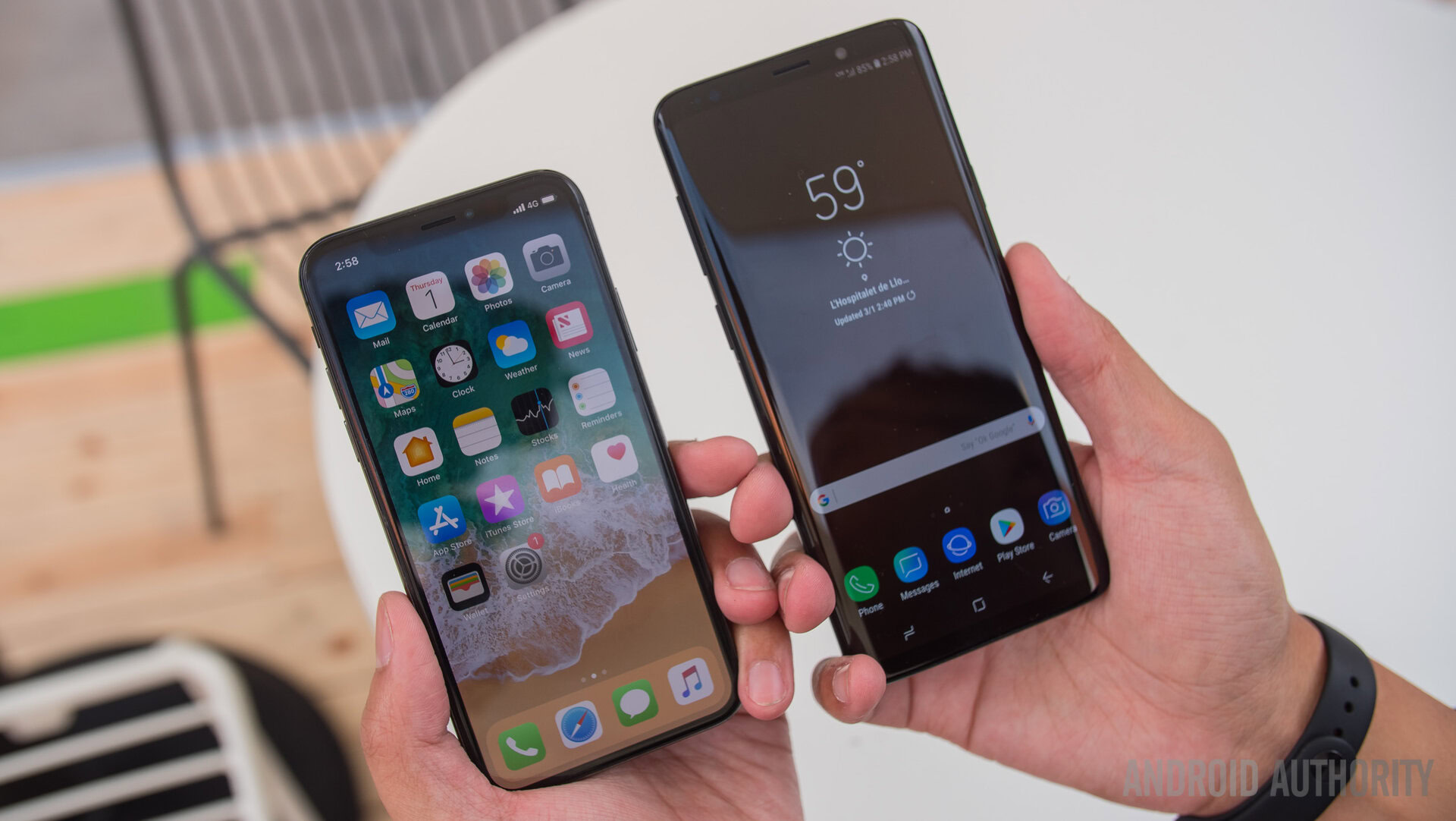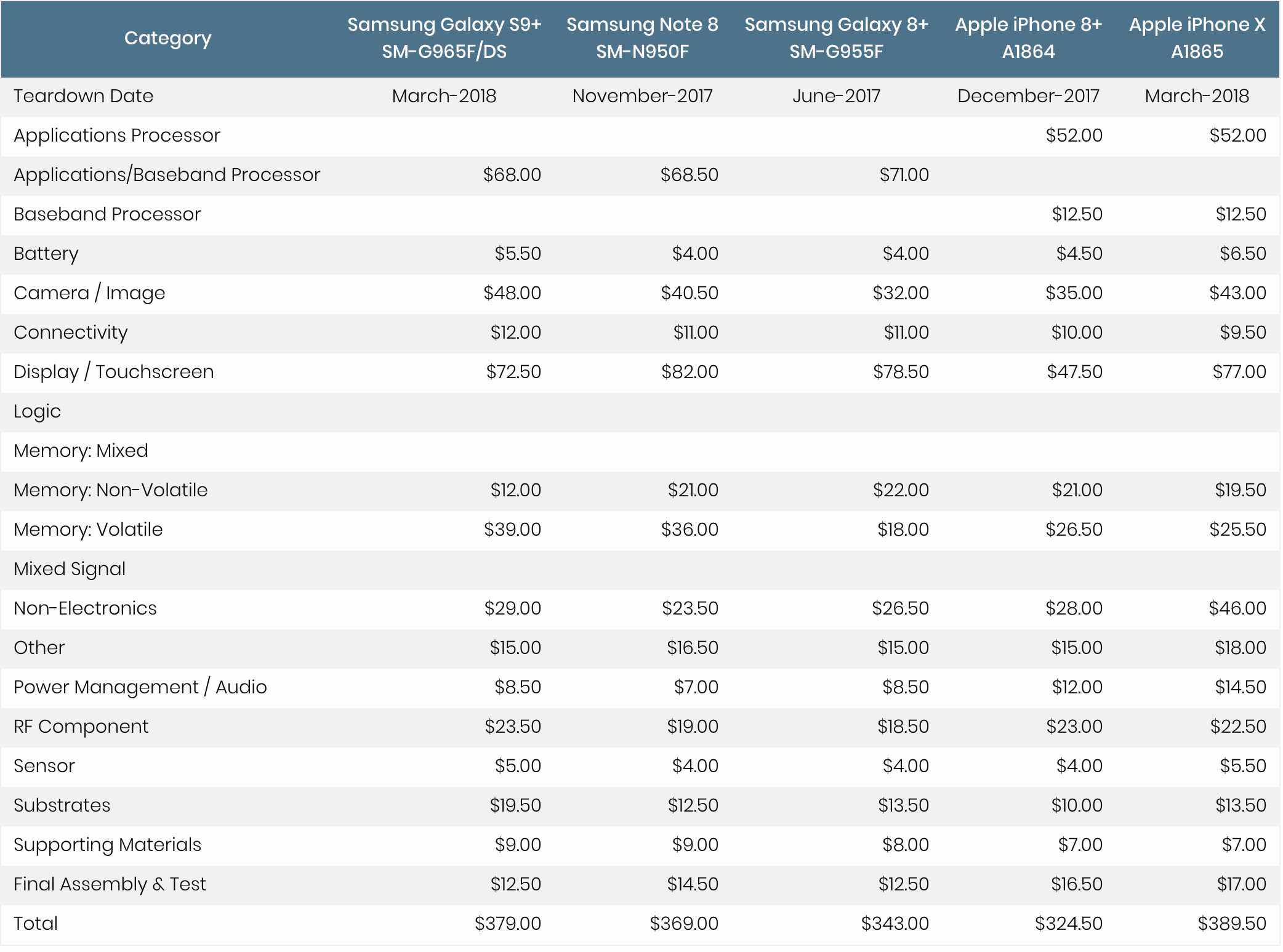Affiliate links on Android Authority may earn us a commission. Learn more.
Galaxy S9 Plus costs less to manufacture than iPhone X
March 20, 2018

- Tech Insights has created a table comparing the costs of goods for Samsung’s flagship devices with Apple’s.
- While the iPhone X has the highest cost of goods, the Galaxy S9 Plus is a close second.
- The Galaxy S9 Plus’ camera sensors and RAM memory saw the biggest increase compared to last year.
It turns out, the Galaxy S9 Plus costs a little more than the Galaxy Note 8 to manufacture, but less than the iPhone X.

Tech Insights has created a table comparing the costs of goods sold for Samsung’s flagship devices and stacking them up against the iPhone 8 Plus and iPhone X, which you can see below. As the online publication points out, these cost estimates are mostly based on concrete data and not “adjusted to account for the gradual decline in the price of older devices.”

Tech Insights‘ estimates indicate that while the iPhone X has a higher cost of goods than any of Samsung’s current flagships, the Exynos-powered Galaxy S9 Plus comes close. For instance, the processor found in the Galaxy S9 Plus costs $67, which has the LTE modem built in. The iPhone X, on the other hand, has its processor and LTE modem separated, though combined, they cost around the same: $64.50.
The Galaxy S9 Plus and iPhone X start to differ when it comes to their cameras. The Galaxy S9 Plus has a variable aperture lens as well as a telephoto lens, which brings the cost up to $48, compared to the iPhone X’s $43. As well, the 6 GB LPDDR4X volatile memory found inside the Galaxy S9 Plus carries a $39 price tag whereas the iPhone X’s 3 GB LPDDR4 volatile memory is estimated at $25.50. The iPhone X has a significantly higher cost for non-electronic components, however, given Apple’s approach to housings.
As for their screens and non-volatile memories, it’s likely that Samsung’s components cost slightly less because these come from Samsung’s very own affiliate.
How does the Galaxy S9 Plus compare to Samsung’s past flagships? There isn’t a huge difference between the current flagship and last year’s Galaxy Note 8. The bigger difference is between the Galaxy S9 Plus and the S8 Plus: this year’s S-series flagship is around $40 more expensive than last year’s, mainly due to the new RAM memory (an increase from 4 GB to 6 GB of RAM) and dual-lens camera.
What are your thoughts on Samsung’s pricing strategy? Do you think it makes sense that the Galaxy Note 8 launched with such a high price tag?